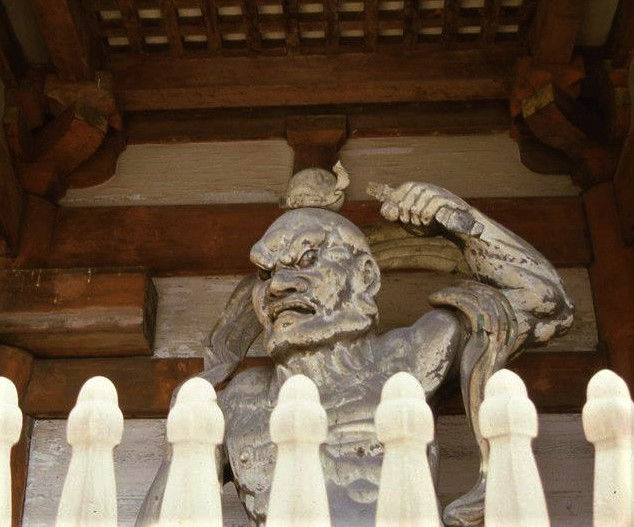Tokyo: Asakusa
- Matthew P G

- Nov 14, 2022
- 3 min read
Updated: Mar 17, 2023

Me and Kimio, March 1986.
On my little street in the Kawauchi section of Sendai, I lived a few houses down from "Convenience 52". It was a family-run business owned by the Kudoh family who became my neighborhood foster parents while I lived in Sendai. I think I learned more from them how to live in Japan than from any other people. They had a son, Kimio, who was a college student and we became friends over time (especially as my Japanese improved).
I convinced him to come with me to Tokyo for a weekend because I teased him relentlessly about being a "country bumpkin" from Sendai who never went anywhere or did anything. We had a great time that weekend just seeing the usual sights and taking photos in the days before phone cameras and selfies. One place that was on every visitor's to do list was the great electronic market in Akihabara. Almost like a permanent Expo showcasing technology in Tokyo, that neighborhood was synonymous with cameras and, at the time all the rage, the "Walkman". Its Yodobashi Camera shop was nationally famous. Kimio loved Akihabara since Sendai had nothing even close to it. As a young man, I enjoyed it, too. I was amazed seeing all the cutting-edge technology at the moment "made in Japan" was morphing into high-quality goods abandoning its postwar "cheap, poorly made junk" reputation.
Nearby was the neighborhood of Asakusa with its famous, Senso-ji Temple. That temple was on nearly every tourist's itinerary in Tokyo because it was so big and so "Japanese" in a city that had become thoroughly modern after its wartime, near-total destruction. Who could turn down a visit to an old temple with a great entrance, a market, AND a pagoda??
Sensoji (浅草寺, Sensōji, also known as Asakusa Kannon Temple) is a Buddhist temple located in Asakusa. It is one of Tokyo's most colorful and popular temples. The legend says that in the year 628, two brothers fished a statue of Kannon, the goddess of mercy, out of the Sumida River, and even though they put the statue back into the river, it always returned to them. Consequently, Sensoji was built nearby for the goddess of Kannon. The temple was completed in 645, making it Tokyo's oldest temple. When approaching the temple, visitors first enter through the Kaminarimon (Thunder Gate), the outer gate of Sensoji Temple and the symbol of Asakusa and the entire city of Tokyo. A shopping street of over 200 meters, called Nakamise, leads from the outer gate to the temple's second gate, the Hozomon. Alongside typical Japanese souvenirs such as yukata and folding fans, various traditional local snacks from the Asakusa area are sold along the Nakamise. The shopping street has a history of several centuries. Beyond the Hozomon Gate stands the temple's main hall and a five storied pagoda. Destroyed in the war, the buildings are relatively recent reconstructions. The Asakusa Shrine, built in the year 1649 by Tokugawa Iemitsu, stands only a few dozen meters to the left of the temple's main building.
Sendai had older temples and shrines in more beautiful settings, but Asakusa Temple was nationally famous. We walked through the massive main entrance gate and up through the street of vendors. Asakusa was always mobbed with people - this was Tokyo after all. Kimio explained some of the things to me in the shops that were particular to Tokyo, most notably food items. I must admit that a rice cracker is a rice cracker is a rice cracker to me. Almost every city in Japan at a minimum had a specially-made senbei (rice cracker) that was its signature product. Tokyo had a lot of special foods, but they just didn't look that different than food I saw in Sendai. A lot of that existed in Japan - fine distinctions between two different things (like a certain food) that meant much in Japanese culture that were lost on foreigners.
We passed through another gate then entered the courtyard of the temple. Even though it had been rebuilt after the war, it was faithfully restored along original lines. It was like stepping out of modern Tokyo and into times past. I am not sure what Kimio thought (other than having visited a nationally famous temple), but I was happy to be sharing the experience with a good friend, feeling just a little less like a tourist. Of all the things we did in Tokyo, I most clearly remember the visit to Asakusa. Maybe Japanese people are so smothered by their lengthy history and rich culture they just take it all for granted, but for me the ancient roots of Japan that persist until today were one of the most fascinating aspects of living there.



Comments